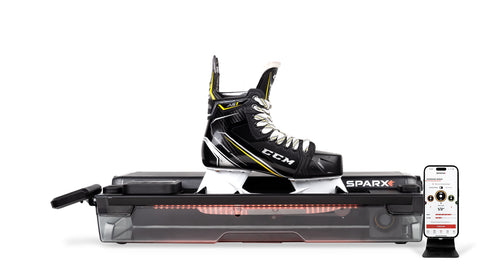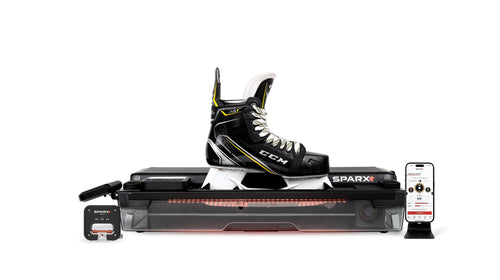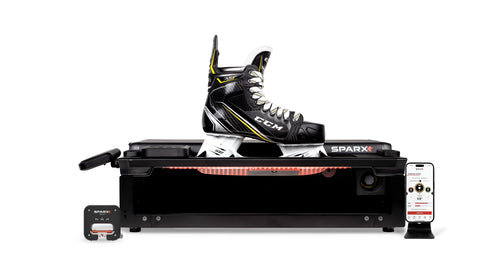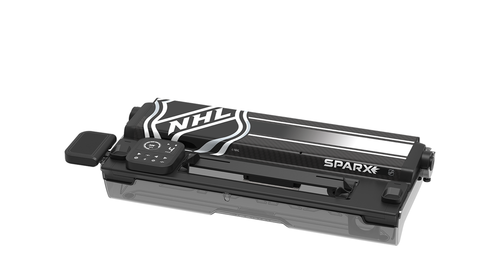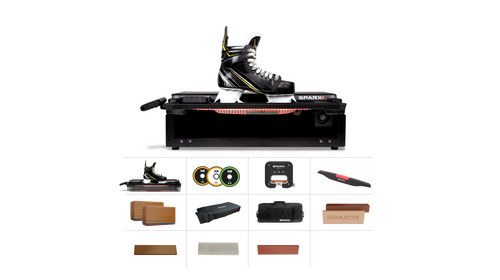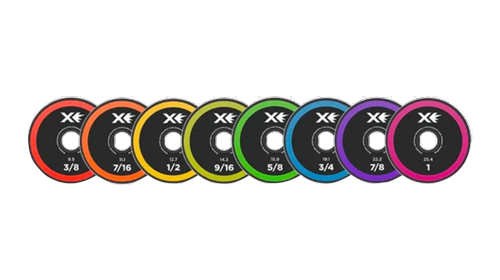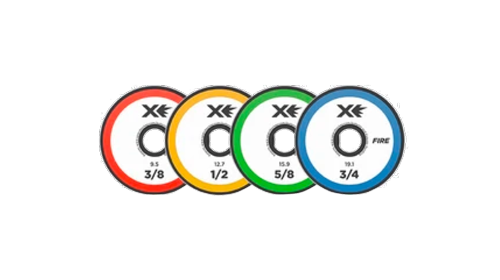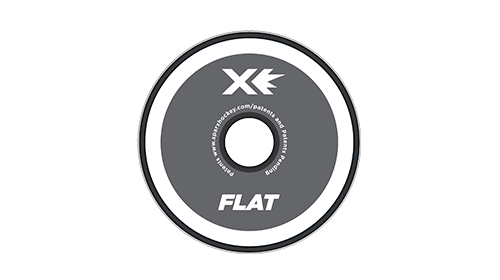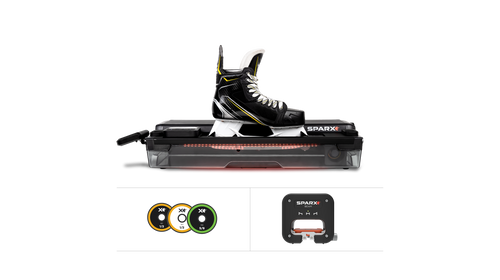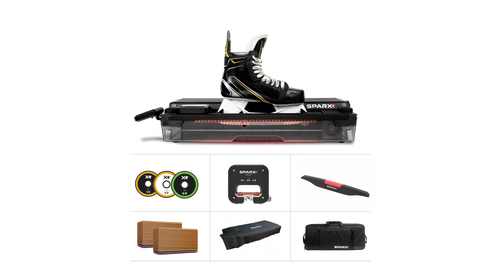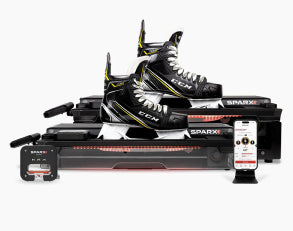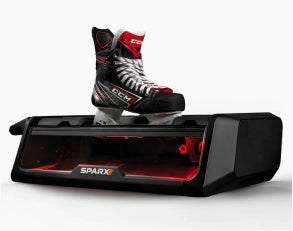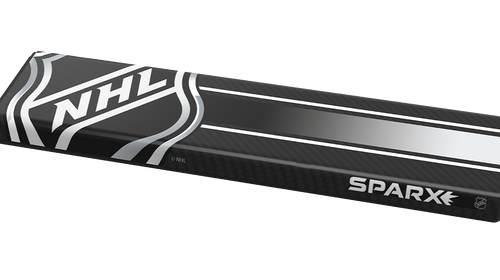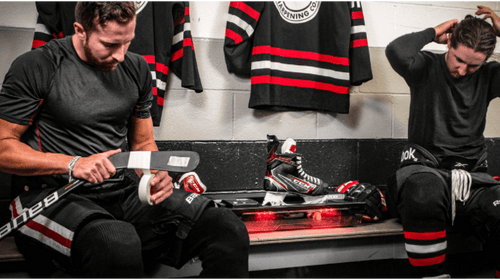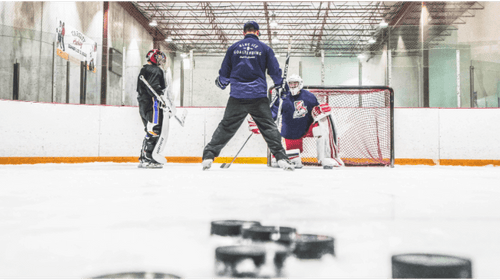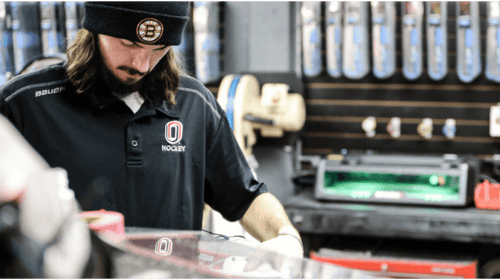Making sure the edges of your hockey skate blades are even is the first thing you should do after getting your skates sharpened. Without even edges, the other important characteristics of a good sharpening don't matter. Once even edges are confirmed, "sharpness" and "smoothness" can be evaluated. Even edges give the skater the sensation of equal grip or bite in the ice on both the inside and outside edges of the blade. If you’ve ever experienced a feeling of having more "grip" in the ice when stopping or turning in one direction versus the other, uneven edges might have been the culprit. If you have ever watched as your son or daughter struggled to turn and stop in a certain direction, uneven edges could have been the cause. Fortunately, a proper sharpening will bring the blade back to a state where the inside and outside edges are even and turning and stopping in both directions should be a lot easier.
After every sharpening and before testing the edges, we recommend first deburring both sides or edges of the blade with a deburring stone and/or leather strop.
Testing for Even Edges
The Coin Test
As stated in our first post on ESS, often a simple "quarter test" is enough to let you know if your edges are uneven. After getting your skates sharpened and having them deburred, turn the skate upside down.

With the blade facing the ceiling, carefully balance a coin (we use a quarter in the USA) on the skating surface. Bring the skate blade to eye-level and look down the blade towards the coin. If there is a significant height difference between the inside and outside edge, it will be visible; you'll see one side of the coin will be higher than the other. If you see this, bring the skates back and ask them to fix them so the edges are once again even.
The Edge Checker
A second way to test for even edges is to use a specific tool designed for the task; an edge checker. There are various types of edge checkers available and, while ultimately providing the same information, they all work a little different from one another. Here is one example.

Again, with the skate upside down (and deburred), secure an edge checking tool on the sharpened skate blade. The second piece of the tool is magnetic, just place it on the skating surface and use the lines to confirm the edges are of equal height. We recommend testing in the heel, mid, and toe locations on the skate blade.
It is important to note that there is a margin of error in which a small difference in edge height is imperceptible to any skater. Some skate sharpeners will insist that the edges are absolutely dead even and that is certainly not a bad thing. At Sparx, we’ve done extensive testing looking at a skater’s sensitivity to uneven edges. What we have found is, as long as the edges are not misaligned more than .003” (the thickness of a piece of notebook paper) the skater is unable to tell that the edges are not perfect.

